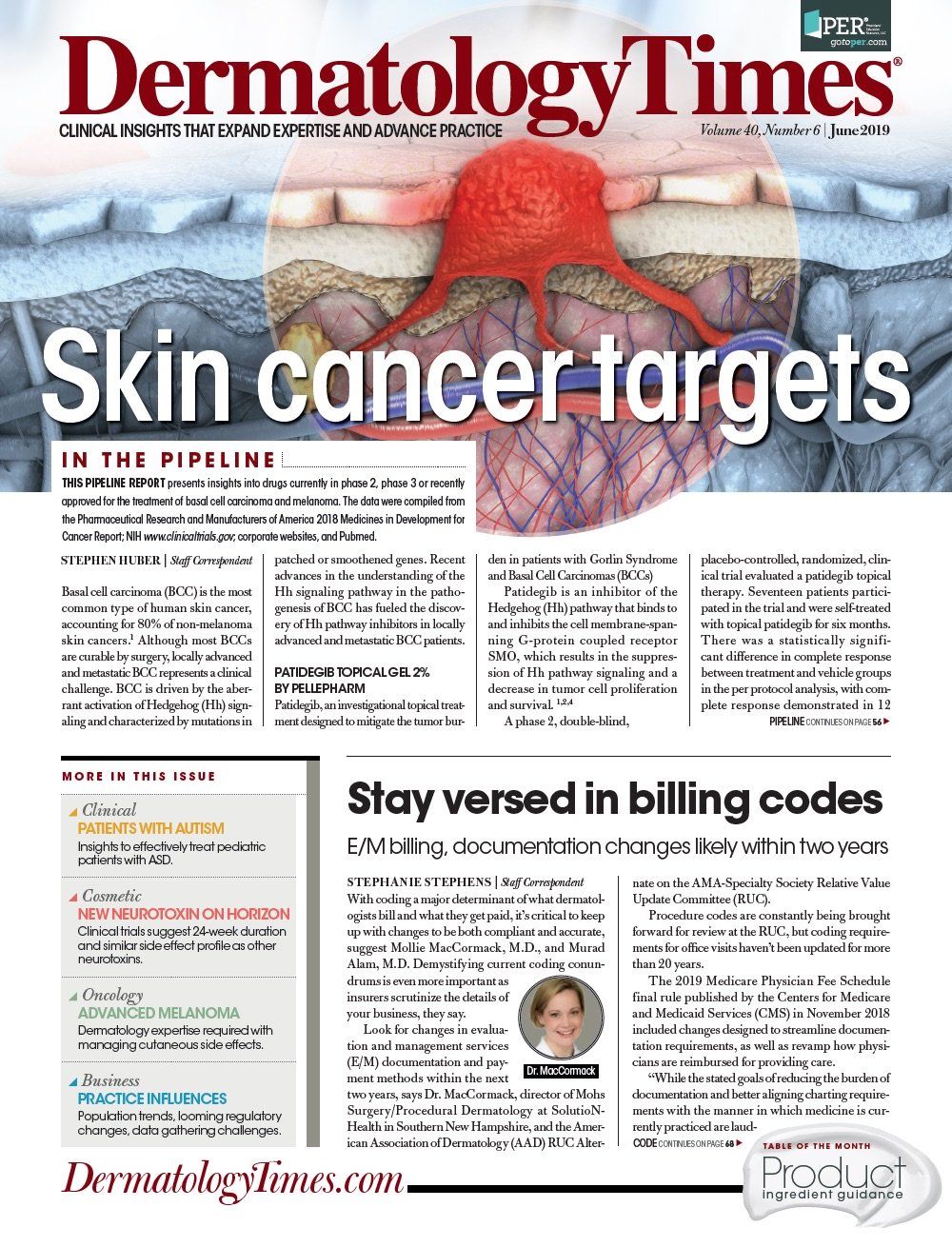- General Dermatology
- Eczema
- Alopecia
- Aesthetics
- Vitiligo
- COVID-19
- Actinic Keratosis
- Precision Medicine and Biologics
- Rare Disease
- Wound Care
- Rosacea
- Psoriasis
- Psoriatic Arthritis
- Atopic Dermatitis
- Melasma
- NP and PA
- Skin Cancer
- Hidradenitis Suppurativa
- Drug Watch
- Pigmentary Disorders
- Acne
- Pediatric Dermatology
- Practice Management
Radiation therapy resurfaces in skin cancer treatment
Superficial radiation therapy is experiencing a renaissance in dermatologic therapy due to the modernized equipment and updated guidelines, as well as excellent treatment outcomes for patients with NMSC which rival those seen with other approaches, including Mohs surgery.
“Superficial radiation therapy is just starting to really take off as a good treatment choice for a select subset of NMSC patients and should be considered as a good treatment option for challenging cases,” says Dr. David J. Goldberg. (Jax10289 - stock.adobe.com)

Superficial radiation therapy (SRT) is experiencing a resurgence and has again piqued the interest of dermatologists seeking the ideal treatment option for their challenging nonmelanoma skin cancer (NMSC) patients.
SRT is among one of the oldest modalities of treatment for NMSC, but has been eclipsed over the years by innovative surgical approaches and newer treatment modalities. However, updates in the technology and excellent clearance outcomes rivaling those of Mohs surgery have once again popularized this treatment modality for particularly challenging cases, offering hope for this patient population.
The incidence of NMSC including basal cell carcinoma (BCC) and squamous cell carcinoma (SCC) is on a steady rise with currently two million to three million new cases of NMSC diagnosed worldwide every year. Nonmelanoma skin cancer can be challenging to treat, and the optimal choice of therapy rests on several factors, including tumor type and location, as well as the patient’s age and comorbidities.
Several treatment modalities are currently being used for NMSC including surgery, cryotherapy, curettage and electrodessication, photodynamic therapy, brachytherapy, chemotherapeutic agents, and radiation therapy including SRT.1
“I have been a Mohs surgeon for over 30 years and I really believe in the efficacy of Mohs, but I have recognized over the years that there are those individuals who are not really ideal candidates for Mohs surgery, or any surgery,” said David J. Goldberg, M.D., Director of Skin Laser & Surgery Specialists of New York and New Jersey and Clinical Professor of Dermatology at Mount Sinai School of Medicine in New York. “Superficial radiation therapy can, many times, be the treatment of choice for this patient subset.”
Nonmelanoma skin cancer patients requiring an alternative to surgery typically fall into one of the following categories:
- elderly
- can’t follow appropriate post-surgery wound care instructions
- have phobia of surgery
- contraindicated for surgery due to a list of comorbidities
- have very large extensive lesions considered inoperable
With the increasing aging population, this particular subset of patients could benefit from SRT.
WHAT'S NEW
A popular approach for the treatment of NMSC in the 1980s, issues with the technology led to its virtual disappearance by the early 1990s, Dr. Goldberg says. Over the course of the last five years, SRT has been made popular again through key changes and innovations resulting very stable, smaller and more portable devices, which allow them to be used in an out-patient environment.
Superficial radiation therapy can be particularly useful for those select cases of NMSC where treatment is particularly challenging, and can oftentimes be a better treatment option than gold standard approaches like Mohs surgery, Dr. Goldberg suggests.
“The cure rate for SRT is proven to be higher than those seen with other treatment techniques used for NMSC, such as electrodessication and curettage, standard surgery, and other hospital-based forms of radiation therapy,” he says. “The cure rate of SRT when used for primary, uncomplicated NMSC is only 1% less than that achieved with Mohs surgery. As such, SRT could fill the therapeutic void for those select NMSC patients who are contraindicated for surgery and more amenable for this effective and forgiving treatment approach.”
USE SCENARIO
There is a treatment approach that’s ideal for each individual patient, he says.
“Surgery is not necessarily the ideal approach in an increasingly elderly population and treatment choices can sometimes be difficult,” Dr. Goldberg said.
Superficial radiation therapy can be of particular advantage in cosmetically sensitive areas, such as the eyelid or tip of the nose, as there is little to no resultant scarring following treatments, unlike the consequences of traditional surgical approaches.
However, clinicians should not use SRT in poorly defined lesions, such as morpheaform type BCC or in any recurrent NMSC cases, Dr. Goldberg says. Rather, these lesions should be addressed with Mohs surgery.
“Superficial radiation therapy is just starting to really take off as a good treatment choice for a select subset of NMSC patients and should be considered as a good treatment option for challenging cases,” he says.
Disclosures:Dr. Goldberg reports the following disclosures: Allergan, Inc. – I(Grants/Research Funding); Almirall – C(S); Aquavit Pharmaceuticals – E(SO); Cutera, Inc. – I(Grants/Research Funding); Foamix – I(Grants/Research Funding); Galderma Laboratories, L.P. – I(Grants/Research Funding); Novan – I(Grants/Research Funding); Sebcaia, Inc – I(Grants/Research Funding); Sensus Healthcare – C(Fees); Sienna Biopharmaceuticals – I(Grants/Research Funding); Stratapharma – I(Grants/Research Funding); Syneron, Inc. – I(Grants/Research Funding), SP(H);
References:
1 Nestor MS, Berman BB, Goldberg D, et al. Consensus Guidelines for SRT. J Clin Aesthet Dermatol. 2019;12(2):12-18

